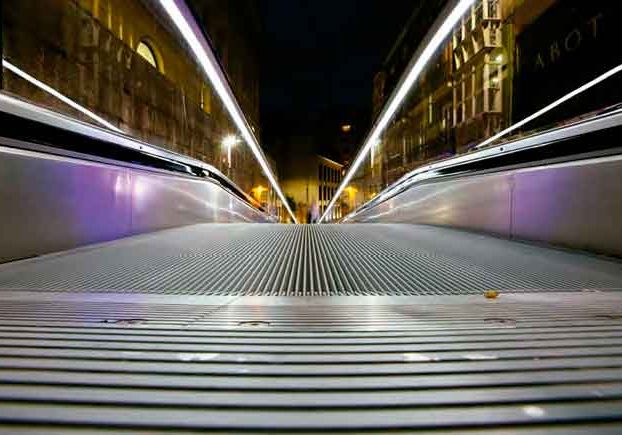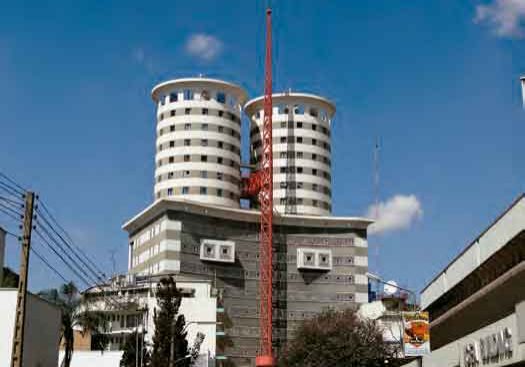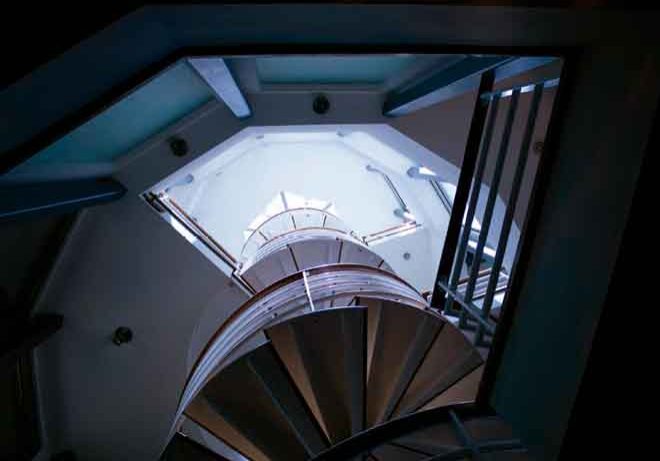Record attendance, relevant content make for another great year.
At the 2017 Wisconsin Elevator Symposium, much of the conversation centered around Hurricane Irma, which hit the coast of Florida on September 11 of that year, and forced the National Association of Elevator Contractors (NAEC) 68th Annual Convention and Exposition to take place at the same time as the symposium. Many vendors and attendees scrambled to make both events.
In 2018, once again, a hurricane — Hurricane Florence — was the subject of many conversations at the NAESA International event. Although it posed no threat to either association’s event, it did impact a few attendees, as they had family- or business-related concerns on the U.S. East Coast, where it was projected to hit.
Once again, the storm did not affect attendance. The 2018 symposium, held on September 12-13 at the Grand Geneva Resort & Spa in Lake Geneva, Wisconsin, drew a record 260 attendees. “This year’s event was the best ever in attendance and content,” NAESA Executive Director Bob Shepherd said. “Jack Day did a great job as the moderator, while Emerald McGehee and Megan Fitzmaurice did all the coordination behind the scenes and at the registration desk to make the event seamless.” Your author heard many attendees make similar remarks regarding the quality of the content.
To open the educational sessions, Joe McAnulty, Liberty Elevator Corp. service manager, gave a brief safety message regarding emergency situations. He reminded everyone to be aware of their surroundings and always know the locations of fire alarms and emergency exits.
Next was escalator consultant Ken Smith, who presented on how to properly perform an escalator step skirt index text. Smith emphasized how to interpret the results of the test. He also compared older testing machines to newer ones, with one key difference being how the data from the test is stored. The newer machines use a flash drive, which is more secure, whereas data corruption is a common problem among older machines.
Mark Mullins, national coordinator for the Elevator Industry Work Preservation Fund, spoke next on hazard awareness, focusing on radio-frequency (RF) radiation and silica. RF radiation is electromagnetic radiation transmitted from telecommunication antennae. If one is exposed for an extended period of time, it can have many negative health effects. The best way to prevent exposure is to contact the building owner and have the units shut down during the job.
Mullins also talked about silica, which is often referred to as “the new asbestos.” Silica is the dust produced as a result of cutting concrete. It is 100 times smaller than a grain of sand, making it highly respirable — often invisible to the naked eye. Inhaling this dust leads to permanent, non-reversible health effects. Mullins emphasized a new rule introduced in June 2017 that requires the use of a water-integrated system when cutting concrete.
After Mullins’ talk was the first break of the day. Attendees enjoyed light snacks and browsed the 25 vendors.
Then, Chris Yoke of the Wisconsin Department of Safety and Professional Services introduced two of his colleagues in the department, Kim Schmitt and Brian Rausch. Yoke observed the “Wisconsin economy is booming,” especially in trade, but that finding qualified field workers is an ongoing challenge. Wisconsin has also seen a significant increase in plans filed and construction reviews requested, which Yoke described as “a blessing but also a challenge.” An interesting note regarding many of those plans is an increase in orchestra pits (mostly in high schools). Schmitt noted that, unfortunately, state inspectors are seeing safety and Americans With Disabilities Act compliance issues with many of these plans and designs. In addition, the state is struggling with enforcing many of the code requirements.
Rausch informed attendees that the state is looking to update the code related to elevators and escalators within the next month — Wisconsin is currently on ASME A17-2013 — and outlined a few notable changes within the International Building Code.
Rausch also mentioned an exciting project coming to the state: the Foxconn project, the largest construction project in America in terms of size, number of buildings and conveyances.
Next was lunch, when the increase in attendance was evident and welcomed by vendors, as the exhibit hall was once again open. One first-time vendor said he was very pleased with the symposium and its attendance, adding that the conversations and connections made were well worthwhile.
Bill Seymour of Seymour Technologies LLC opened the afternoon sessions with his presentation on machine-room guarding. Seymour said safeguarding is essential for protecting employees from needless and preventable injury, adding, “Any machine part, function or process that may cause injury must be safeguarded.” Many of the photos Seymour showed of unguarded machines prompted gasps of disbelief. He also noted that partial guards are more of an illusion and actually create an additional hazard.
Also during the first day, Day shared the first of two presentations on A17.1-2016 and its various changes. These presentations generated lively discussion and questions.
Thursday night was the always-enjoyable evening reception, complete with a silent auction. Funds from the auction, which this year totaled US$2,670, were presented to the Elevator Escalator Safety Foundation (EESF). Some of this year’s items included Amazon Echo and Google Home devices, wireless speakers and headphones, iPads and TVs. Along with the excitement of the auction were cocktails and hors d’oeuvres, as well as networking opportunities. The second day opened with another brief but important safety message from Joe McAnulty on the importance of personal protective equipment (PPE). He cited some alarming statistics, including that only a small percentage of workers wear the proper equipment — a good reminder to familiarize oneself with the Elevator Industry Field Employees’ Safety Handbook (available at elevatorbooks.com) chapter on proper PPE.
Next was Lawrence Taylor, Codes and Standards officer for Schindler. Taylor was able to weave his unique sense of humor throughout his presentation on electrical code. In particular, he focused on lesser-known National Fire Protection Association’s NFPA 70® 2017 requirements and related information. Taylor was followed by a brief break, then Day’s continuation of his A17.1- 2016 presentation.
Ian MacMillin, reliability manager for KONE’s Eastern U.S. region, was the next presenter, speaking on KONE’s code- compliance and testing procedures. MacMillin took attendees through the specific testing procedures for various KONE products, such as the company’s governor switch to prevent ascending car overspeed.
From your author’s own experience and gathered from talking to the inspectors and vendors, the 2018 symposium was a huge success. This year, NAESA will once again host the Wisconsin Symposium in Lake Geneva. The dates have been set for September 26-27. You can learn more at naesai.org.
Sponsors
NAESA International is thankful to the following 2018 Wisconsin Symposium sponsors:
- GAL, a member of the Vantage family of companies
- D.H. Ross Elevator Inspections, Inc.
- ATIS
- Virginia Controls, Inc.
- Globe Architectural & Metal
- MEI — Total Elevator Solutions
- Elevator Inspection Service
- Innovation Industries, Inc.
- Gorman Co., Inc.
- Ortman Drilling & Water Services
- Elevator Inspection Service (Wisconsin)
- Vator Accessories
- CodeDataPlate.com
- SCS Elevator Products, Inc.
New Board
Members of the 2018-2019 board of directors were elected during this year’s symposium. They are:
- Christopher L. Shade, State of Ohio
- Dean G. McLellan, Technical Standards and Safety Authority (TSSA), Toronto
- Daniel J. Schmaltz, State of California
- Gary D. Barnes, Idaho Division of Building Safety
- Stephanie E. Coyne, TSSA, Toronto
- James L. Borwey, State of Iowa
- Paul R. Zweig, code compliance specialist, Washington, D.C., government
- Frederick (Charlie) C. Slater, ATIS, St. Louis
- William M. Snyder, VTE Solution, LLC, Indian Rocks Beach, Florida
- Christopher M. Dodds, Liberty Elevator Experts, Newark, Delaware
- Gregory J. DeCola, Omega Industries, New City, New York
- Barry Blackaby, Farmington, Connecticut
- George W. Gibson, George W. Gibson & Associates, Inc., Sedona, Arizona
- Davis L. Turner, Davis L. Turner & Associates, Mission Viejo, California
- Robert D. “Bob” Shepherd, NAESA International, Mankato, Minnesota
Get more of Elevator World. Sign up for our free e-newsletter.










